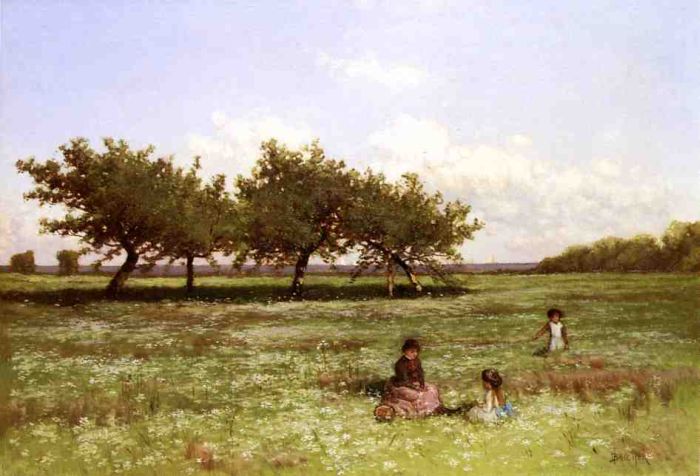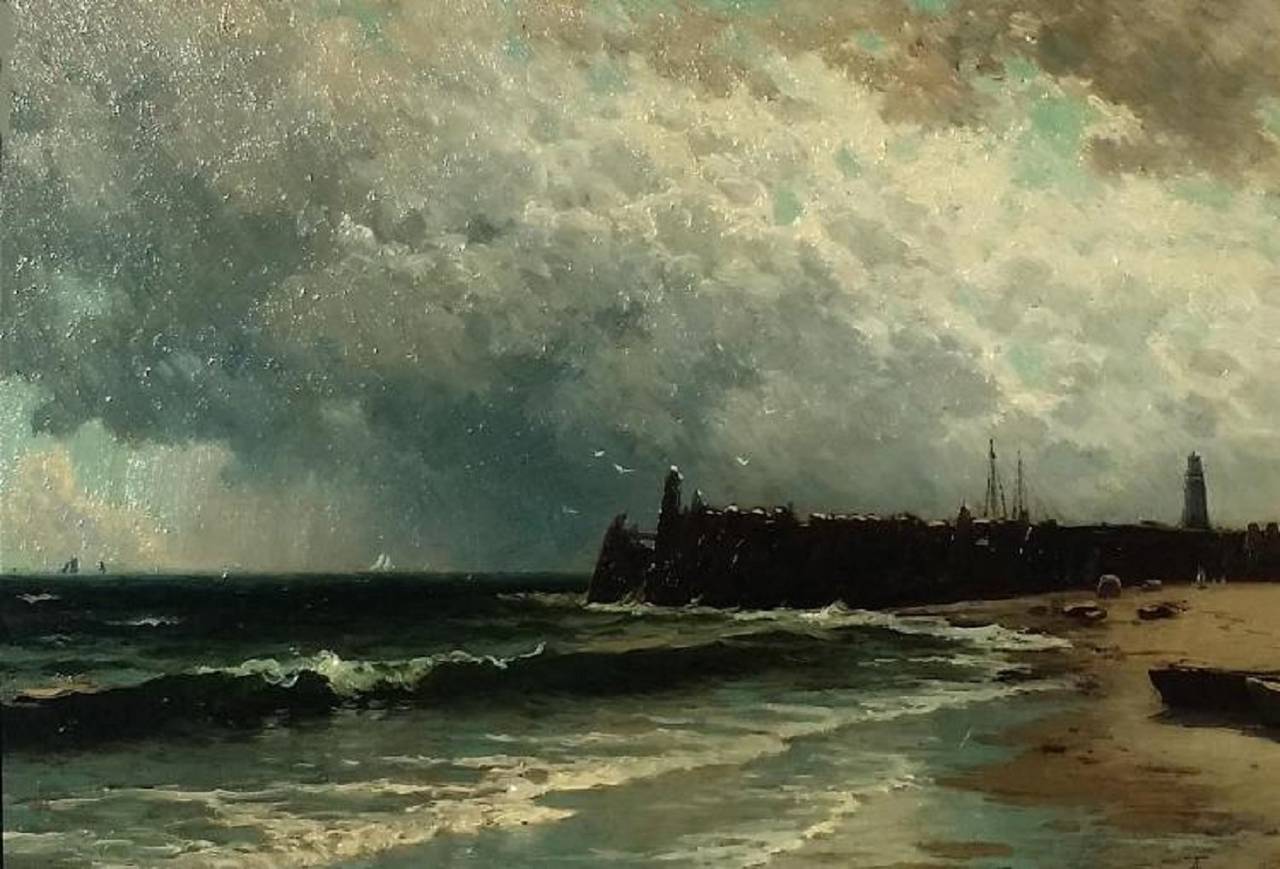Alfred T. Bricher, American, 1837-1908
Fog Clearing on Manomet • Watercolor on Paper 11" x 26"
Alfred Bricher was a Romantic at heart. In love with nature, beauty and all things new. There’s a reason few of his paintings showed people or buildings. There were few of each where he traveled. At the age of 29 he spent a summer paddling down the Mississippi looking for wilderness areas to match the majestic epic poem “Song of Hiawatha” written by Longfellow less than ten years earlier. This poem was remarkably popular in the mid-1800s. It seems Bricher always did have a sense of popular opinion.
A self-taught artist, Bricher was first drawn to the Romantic style of art and its deeply spiritual connection to nature. As he matured, he began to explore a fascination with light, much as Impressionist artists were doing at the same time, on the other side of the Atlantic. In America, this fascination led to Luminisum, a style not actually named until 50 years after it went out of style. The term “Luminism” describes a group of artists who painted water and skies with an almost mystical, shimmering quality. Bricher was one of the last, and foremost, Luminisim artists.
INTERESTING STORIES FROM OUR SPONSORS

It’s fun to compare Bricher’s work with paintings by Paul Cezanne, the French artist who shared his love of light. Interestingly, Cezanne’s own life started one year after Bricher’s birth and ended exactly one year after Bricher’s death.
Both were fascinated by light. Bricher, the Luminist, painted with precise details and worked hard to hide his brushstrokes. Cezanne, eliminated detail while trying to capture moments in time, and used purposely visible brushstrokes, adding a sense of haste to his work. You could say that Luminism and Impressionism are alternate realities from each other and the work of Bricher and Cezanne prove it.
A native of Portsmouth, New Hampshire, Bricher spent most of his life in the cosmopolitan confines of Boston and New York City. But, if you were to count all the days of his adult life, it’s quite likely the majority were spent in wilderness areas stretching from Canada’s great Bay of Fundy to the Mississippi River. In these uncivilized spaces he worked to capture the beauty of nature using both oil paints and watercolors. The stunning reality of his work made him one of America’s most popular 19th Century artists.
At the door on summer evenings
Sat the little Hiawatha;
Heard the whispering of the pine-trees,
Heard the lapping of the waters,
Sounds of music, words of wonder.
The epic poem Hiawatha once drove Bricher down the Mississippi. In 1908, he died, leaving behind a voluminous collection of landscapes and seascapes. One, capturing a summer morning along the seashore, found it’s way to Canton, Ohio. Come see the wonder.
Canton Museum of Art Permanent Collection • Purchased by the Canton Museum of Art, 86.11
4 Ways to Sound Smart When Viewing at The Canton Museum of Art
1.
“He is most often identified with the Hudson River School of Painters, but is one of the last of that crew to employ Luminism in his work.”
2.
“Luminism defines a group of artists who developed ways to add a luminous quality to water and skies. It gave their work a more tranquil quality.”
3.
“No, Thomas Kinkade was not a Luminist.”
4.
“The Luminists shared a fascination with light with Impressionist artists working at the same time on the other side of the Atlantic.”
Alfred Bricher Timeline. Scroll over images to see timeline.

















